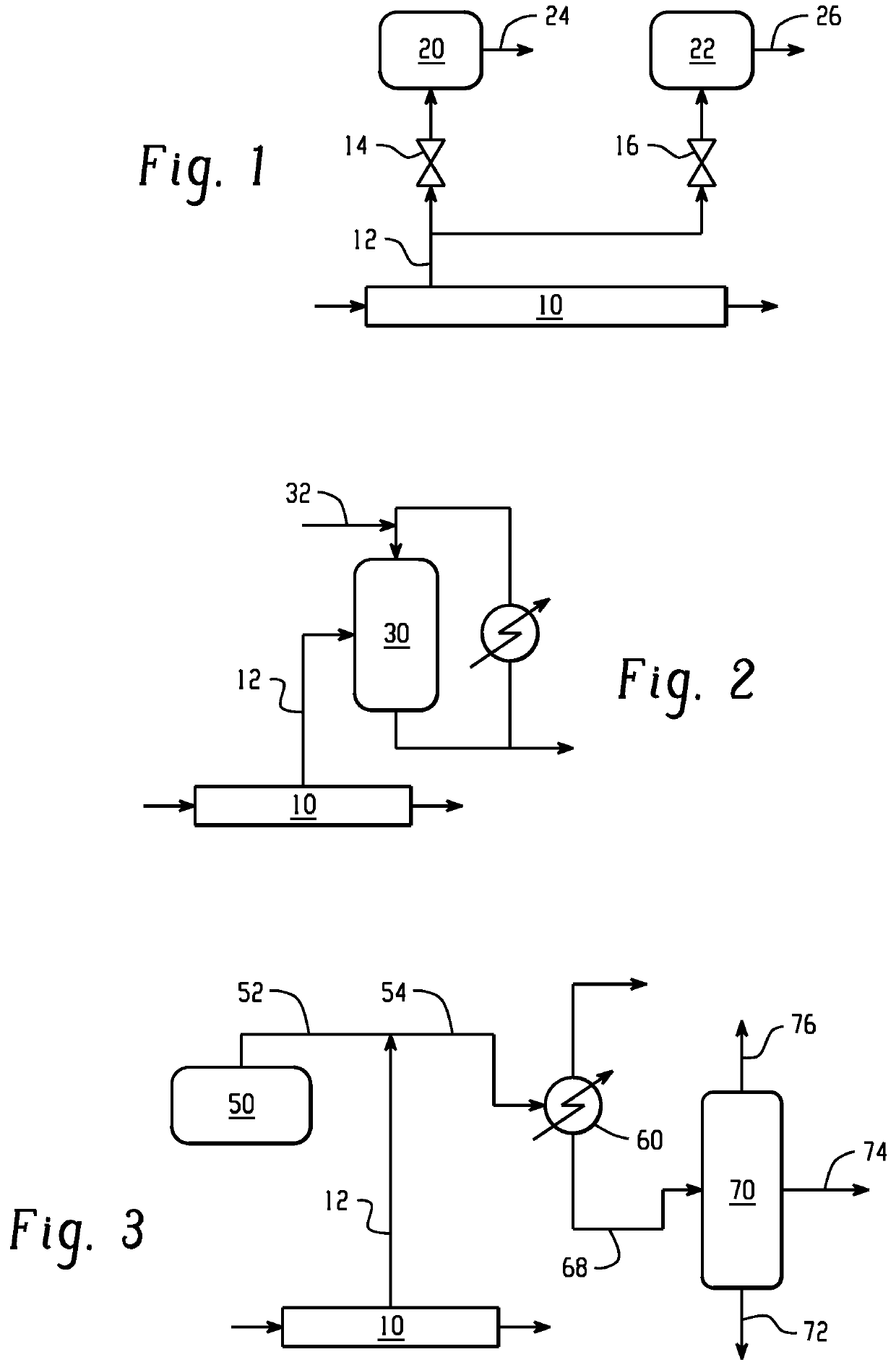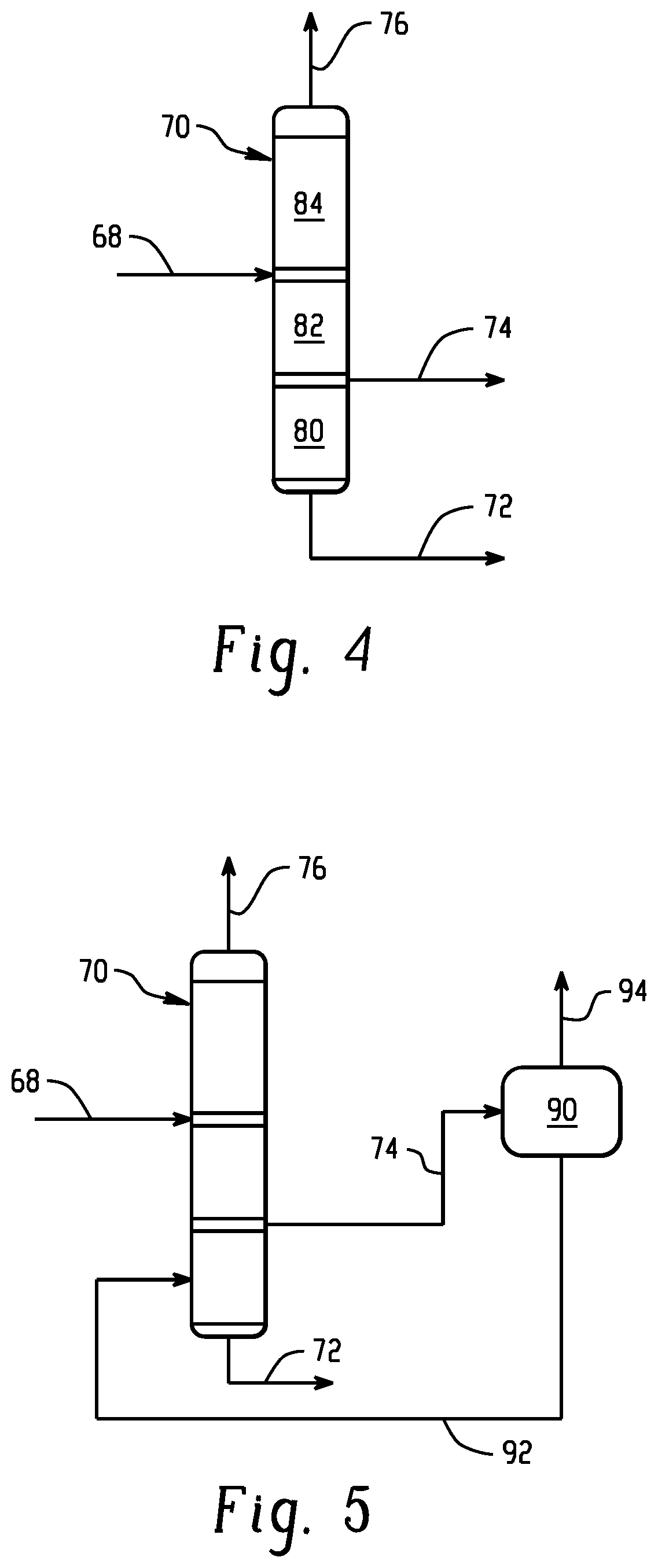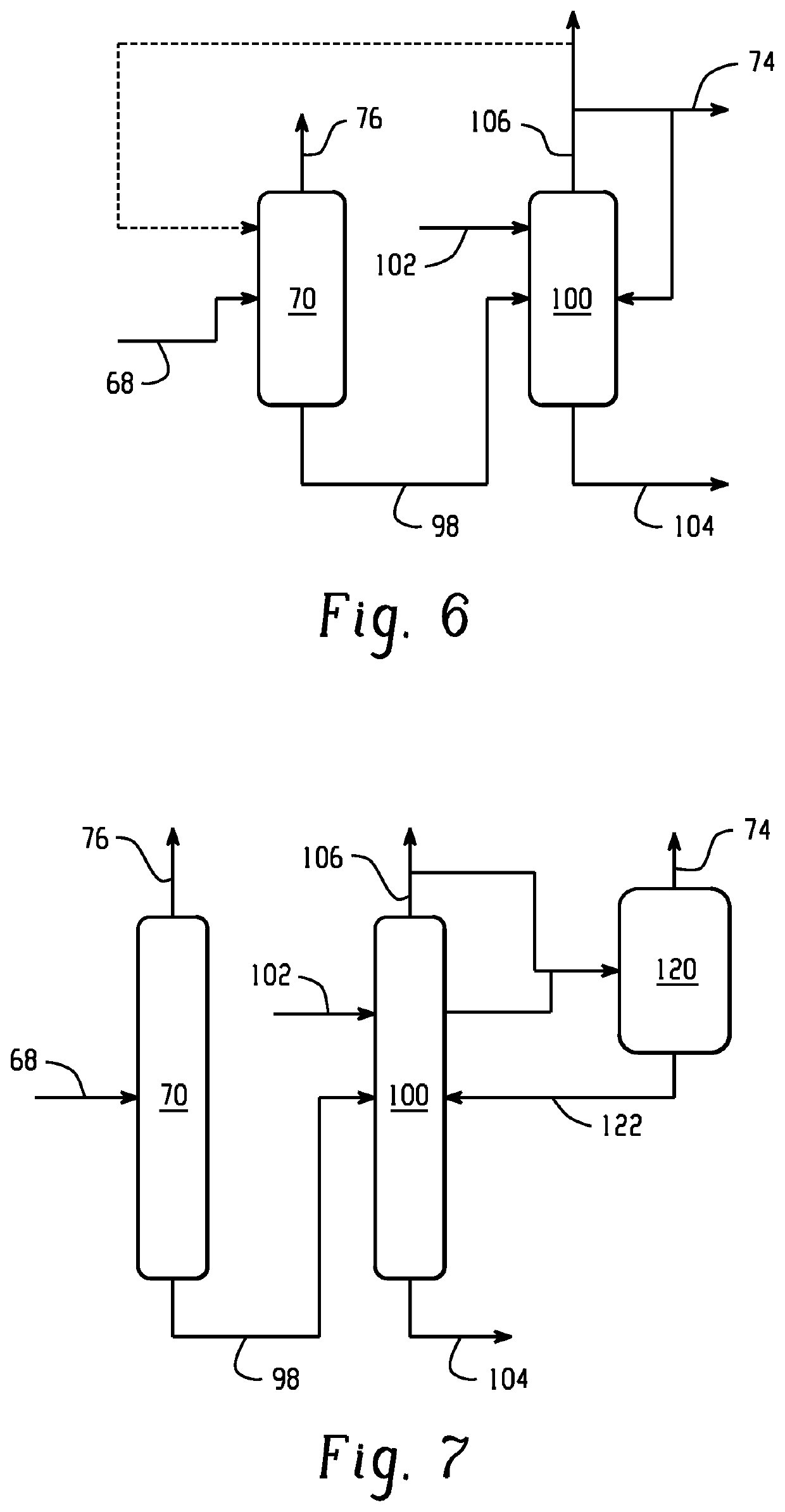A method of recovering phenol in a melt polycarbonate polymerization
a polycarbonate polymerization and phenol technology, applied in the field of recovering phenol in a melt polycarbonate polymerization, can solve the problems of high operational and capital cost, and the design of such condensers that can withstand the thermal stresses caused by switching utilities, and achieve the effect of increasing both capital and operating costs
- Summary
- Abstract
- Description
- Claims
- Application Information
AI Technical Summary
Benefits of technology
Problems solved by technology
Method used
Image
Examples
examples 1-2
Continuous Condensation of a Phenol Solvent Mixture
[0054]A lab scale distillation column was set up where a single-neck round-bottom flask was heated using an oil bath. A jacketed distillation column was attached to the neck of the round-bottom flask and cooling water was flowed in the jacket of the distillation entering from a lower inlet and exiting from an upper outlet. A vacuum pump was hooked up to the top of the distillation column to control the pressure in the column.
[0055]In Example 1 a solution comprising 6 volume percent (vol %) of phenol and 33.4 vol % of diphenyl carbonate was added to the round-bottom flask. A temperature of the entering cooling water was 30° C. and the pressure was set to 1.5 millibar. Severe freezing was observed in the distillation column as soon as it started boiling.
[0056]In Example 2, a solution comprising 30.1 vol % of phenol, 15.1 vol % of diphenyl carbonate, and 54.8 vol % phenyl methyl carbonate was added to the round-bottom flask. A temperat...
example 3-5
Effect of Solvent Presence in the Separation Column
[0057]In Example 3, a simulation using ASPEN software was performed using separation column 70 as illustrated in FIG. 6 using a feed location in between the middle packing section and the lower packing section and instead using the feed stream that was freeze condensed stream 24 as illustrated in FIG. 1. The results are shown in Table 1, where the total mass flow rate is shown in kilograms per hour (kg / hr).
TABLE 1PhenolFeedBottomrecoveryStreamstreamstreamstreamStream number249876Total mass flow rate (kg / hr)2,5008001,700Phenol (wt %)695100Diphenyl carbonate (wt %)2888—Bisphenol A (wt %)25—Other (wt %)12—Pressure (bar absolute)10.150.07Temperature (° C.)135190107
[0058]In Example 4, a simulation using ASPEN software was performed using separation column 70 as illustrated in FIG. 4. The results are shown in Table 2.
TABLE 2DiphenylcarbonateSolventPhenolFeedrecoveryrecoveryrecoveryStreamstreamstreamstreamstreamStream number68727476Total m...
PUM
| Property | Measurement | Unit |
|---|---|---|
| vapor pressure | aaaaa | aaaaa |
| vapor pressure | aaaaa | aaaaa |
| freezing point | aaaaa | aaaaa |
Abstract
Description
Claims
Application Information
 Login to View More
Login to View More - R&D
- Intellectual Property
- Life Sciences
- Materials
- Tech Scout
- Unparalleled Data Quality
- Higher Quality Content
- 60% Fewer Hallucinations
Browse by: Latest US Patents, China's latest patents, Technical Efficacy Thesaurus, Application Domain, Technology Topic, Popular Technical Reports.
© 2025 PatSnap. All rights reserved.Legal|Privacy policy|Modern Slavery Act Transparency Statement|Sitemap|About US| Contact US: help@patsnap.com



